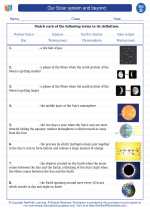Our Solar system and beyond -> moon
The Moon
The moon is Earth's only natural satellite and is the fifth largest moon in the solar system. It has a significant impact on Earth's tides, and its phases have been studied and revered by humans for centuries.
Formation
The leading theory for the formation of the moon is the Giant Impact Hypothesis. This suggests that the moon was formed from the debris left over after a giant impact between Earth and a Mars-sized body early in the history of the solar system.
Phases of the Moon
The moon's appearance changes over the course of a month, as it goes through its different phases: new moon, waxing crescent, first quarter, waxing gibbous, full moon, waning gibbous, third quarter, and waning crescent.
Surface Features
The moon's surface is covered in large, dark plains called maria, and is also home to numerous craters, mountains, and valleys. The lack of atmosphere and weather on the moon means that these surface features remain relatively unchanged over vast periods of time.
Impact on Earth
The moon's gravitational pull is responsible for the ocean tides on Earth. This gravitational interaction also causes the moon to become tidally locked, meaning the same face of the moon always faces towards Earth.
Exploration
Humans first landed on the moon in 1969 during the Apollo 11 mission. Since then, several other missions have been sent to the moon to study its surface and geology.
Study Guide:
- What is the leading theory for the formation of the moon?
- List the phases of the moon in order.
- What are the major surface features of the moon?
- How does the moon impact Earth?
- When was the first human landing on the moon, and what was the mission called?
[Moon] Related Worksheets and Study Guides:
.◂Science Worksheets and Study Guides Fourth Grade. Our Solar system and beyond
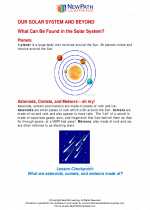
 Worksheet/Answer key
Worksheet/Answer key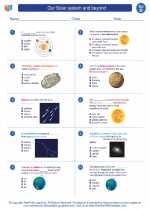
 Worksheet/Answer key
Worksheet/Answer key
 Worksheet/Answer key
Worksheet/Answer key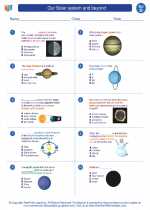
 Vocabulary/Answer key
Vocabulary/Answer key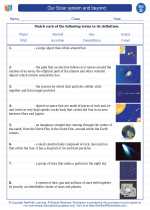
 Vocabulary/Answer key
Vocabulary/Answer key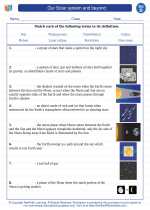
 Vocabulary/Answer key
Vocabulary/Answer key